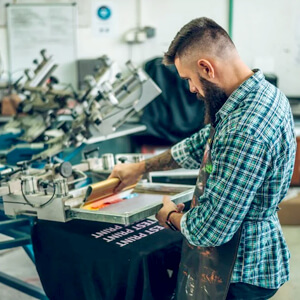Fabric Printing isn't just about splashing colours onto cloth - it's storytelling, creativity and craftsmanship all rolled into one. Have you ever stopped to admire the intricate patterns on your favourite
saree? Chances are, you've wondered how those stunning prints came to life. Well, here's a little secret:
Fabric Printing is where science meets art, and the results are nothing short of magical.
Imagine walking through a crowded market, the kind where vibrant fabrics drape over every stall, and each piece seems to whisper its own tale. From
bold florals to
delicate geometric patterns, the variety is mind-boggling. But behind those beautiful designs lies an age-old tradition of fabric printing that has evolved over centuries. It's fascinating to think that something as simple as a piece of cloth can transform into a canvas for culture, history and self-expression.
What is even more exciting is how
Fabric Printing Techniques range from
traditional methods like
block printing - where artisans meticulously hand-stamp each design - to modern innovations like
digital printing, which feels like something out of a sci-fi movie. Each technique has its own charm and purpose, whether it's adding texture, enhancing colour vibrancy or creating patterns that feel almost three-dimensional.
























 CONTACT USWaves Institute of Fashion Designing,
CONTACT USWaves Institute of Fashion Designing,